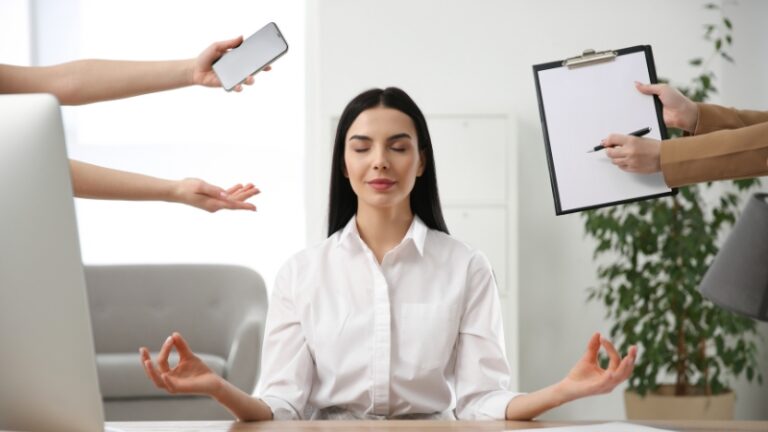Anxiety often feels overwhelming, but you do not need big changes to begin feeling better. Small daily actions known as micro habits can significantly calm your mind and help manage anxiety naturally.
These micro habits work because they are easy to maintain even on busy or difficult days, building a foundation of calm and resilience over time.
Instead of trying to overhaul your entire routine, you can start with a few minutes each day using these micro habits to ease anxiety and regain control of your thoughts.
Micro Habit
Time Required
Key Benefit
Practical Example
One Minute Breathing Reset
1 minute
Calms the nervous system, reduces racing thoughts
Box breathing during work breaks
Morning Sunlight Exposure
5-10 minutes
Regulates mood and circadian rhythm
Stand on the balcony with a morning coffee
Five Minute Walk Without Your Phone
5 minutes
Reduces cortisol, clears the mind
Walk around your block without your phone
Three Minute Journaling
3 minutes
Reduces mental clutter, increases perspective
Write down worries and a gratitude list
Drinking Enough Water
Ongoing
Supports the nervous system, lowers cortisol
A glass of water after waking up
Five Minute Decluttering
5 minutes
Creates mental calm through visual order
Tidy your nightstand or work desk
One Positive Affirmation Each Morning
1 minute
Rewires the mindset toward positivity
Repeat, I am capable of handling today
Practicing a Gratitude Pause
1-2 minutes
Shifts focus from fear to stability
List three things you are grateful for
Stretching for Two Minutes
2 minutes
Releases physical tension, calms the mind
Neck and shoulder rolls before bed
Mindful Hand Washing
30 seconds
Grounds you in the present
Focus on water sensation during washing
Keeping a Consistent Bedtime
Daily habit
Regulates the nervous system, improves sleep
Go to bed at the same time each night
1. One Minute Breathing Reset
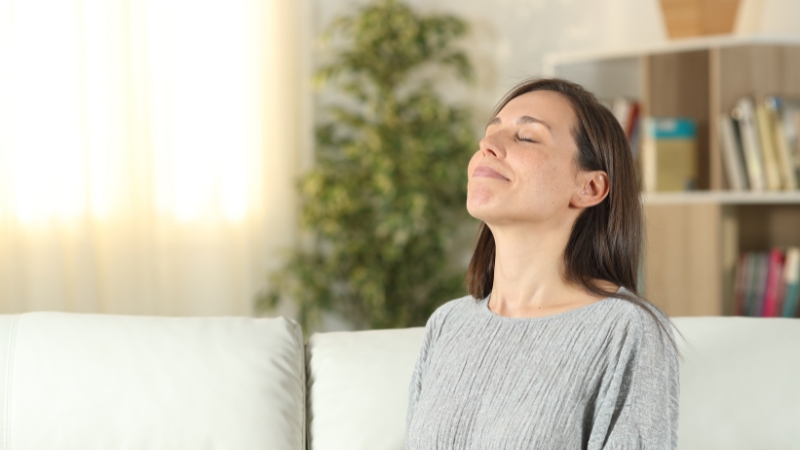
Anxiety often causes shallow, rapid breathing, which signals your body to stay in a heightened state of alert. A one-minute breathing reset using box breathing interrupts this cycle.
Breathe in for four counts, hold for four counts, breathe out for four counts, and hold again for four counts. Repeat this cycle for one minute.
You can use this during lunch breaks, before meetings, or when you feel tension rising in your body. Consistently practicing this micro habit can help you retrain your body to respond calmly in stressful situations while reducing symptoms like a racing heart or tight chest.
Why It Works
It lowers your heart rate, reduces racing thoughts, and can be used anytime you feel overwhelmed during your day.
Aspect
Details
Time
1 minute
Location
Anywhere you can sit or stand calmly
Best Times
Before meetings, after stressful moments, morning
Benefits
Lowers cortisol, calms mind, improves focus
2. Morning Sunlight Exposure
View this post on Instagram
Morning sunlight exposure within an hour of waking up helps regulate your internal clock, which directly impacts your anxiety levels and mood stability.
Sunlight signals your brain to reduce melatonin and increase serotonin, which helps you feel more awake, positive, and calm throughout the day.
You can combine this habit with drinking your morning coffee outside or opening your window to let sunlight in while stretching. On cloudy days, natural daylight still provides enough brightness to positively impact your mood and reduce anxiety.
Why It Works
Morning sunlight increases serotonin, which helps manage anxiety and improves your sleep quality at night.
Aspect
Details
Time
5-10 minutes
Location
Balcony, yard, open window
Best Times
Within 30-60 minutes of waking up
Benefits
Regulates mood, stabilizes circadian rhythm, and increases serotonin
3. Five-Minute Walk Without Your Phone
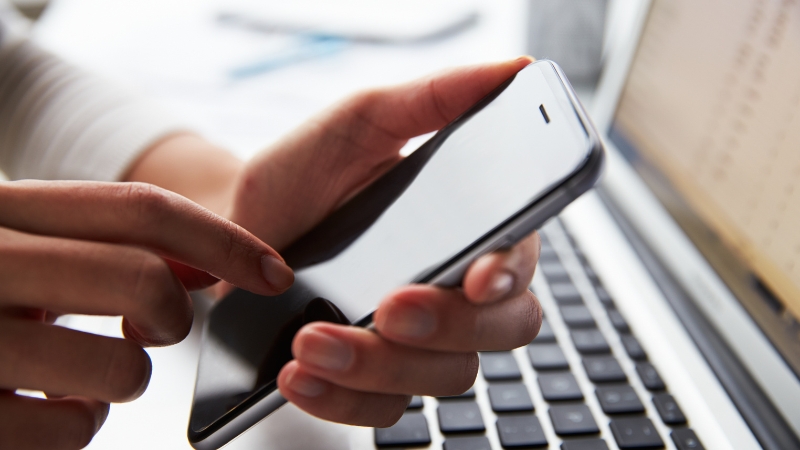
Walking without distractions helps your brain process thoughts and emotions while reducing cortisol, the stress hormone linked with anxiety.
A five-minute walk without your phone allows you to connect with your environment and disengage from social media or constant notifications that often increase anxious feelings.
If you can, choose a green space like a park for your walk, as nature exposure has additional calming effects. However, simply walking around your home or down the street will still provide benefits and can become a reliable mental reset in your day.
Why It Works
Walking reduces cortisol levels, supports emotional regulation, and improves clarity.
Aspect
Details
Time
5 minutes
Location
Yard, block, hallway, stairs
Best Times
Midday, during breaks, when feeling stuck
Benefits
Lowers stress, clears mind, promotes emotional balance
4. Three Minute Journaling
@zoltancomedy Journaling for Anxiety 📗 #safejournal #anxietyrelief #mentalhealth #journal #mentalhealthmatters @Safe Journal ♬ original sound – Zoltan Kaszas
Writing down your thoughts helps you separate yourself from your worries and see them from a clearer perspective. Spend three minutes writing about what is causing your anxiety and immediately follow with what you are grateful for.
This dual approach helps balance your mind and reduces the intensity of anxious thoughts.
Use a notebook you keep by your bed or desk to make this a consistent habit. Journaling by hand is more effective for emotional processing compared to typing, as it slows your thoughts and anchors your focus.
Why It Works
Journaling slows down your thoughts, helps you gain perspective, and reduces mental clutter.
Aspect
Details
Time
3 minutes
Location
Desk, bedside, kitchen table
Best Times
Morning, evening, after stress
Benefits
Emotional processing, perspective, clarity
5. Drinking Enough Water
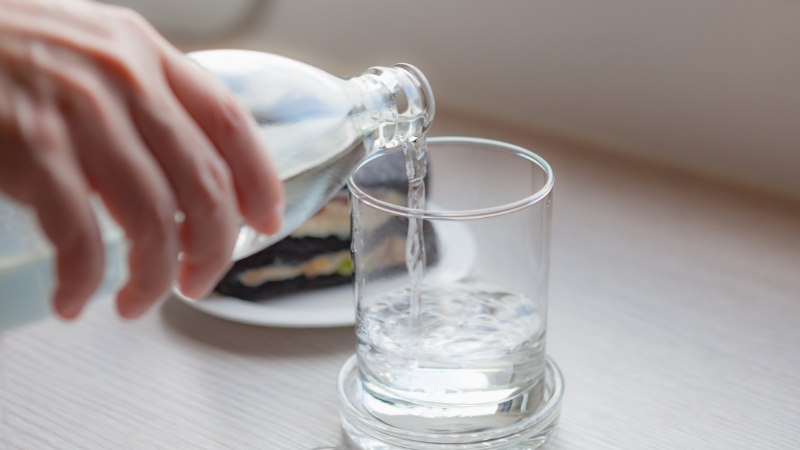
Mild dehydration can increase cortisol and exacerbate feelings of anxiety. Ensuring consistent hydration keeps your body functioning optimally, reduces physical stress on your system, and prevents irritability linked to dehydration.
Pair this micro habit with your morning routine by drinking a glass of water right after waking up. Carry a water bottle with you to encourage consistent hydration throughout the day without requiring additional mental effort.
Why It Works
Dehydration can increase cortisol and worsen anxiety symptoms.
Aspect
Details
Time
Throughout the day
Location
Anywhere
Best Times
After waking up, with meals
Benefits
Lowers cortisol, supports brain function, and prevents irritability
6. Five Minute Decluttering
7 low-stress ways to start decluttering https://t.co/5qSFWCkfo3
— TIME (@TIME) February 20, 2024
Visual clutter can create mental overwhelm and contribute to anxious feelings. Spending five minutes decluttering a small area like your desk or a kitchen counter can create a sense of control and order, which helps reduce mental clutter.
Set a timer for five minutes and focus on one area without distractions. Throw away trash, organize items, and wipe the surface clean. This micro habit can instantly make your environment feel more peaceful and your mind more focused.
Why It Works
Visual clutter contributes to mental clutter and anxiety.
Aspect
Details
Time
5 minutes
Location
Desk, nightstand, kitchen counter
Best Times
Morning, midday, evening reset
Benefits
Reduces overwhelm, increases focus, creates calm
7. One Positive Affirmation Each Morning
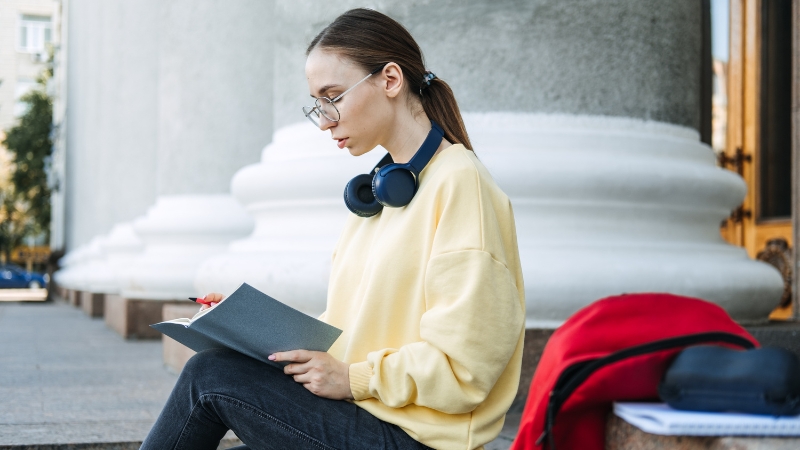
Positive affirmations help counter the negative self-talk that often fuels anxiety. Start your day with a simple statement like I am capable of handling what today brings or I am learning to manage my anxiety with patience.
This practice helps build mental resilience and encourages you to approach your day with a calmer mindset. You can say it aloud while looking in the mirror or silently while preparing for your day.
Why It Works
Affirmations reduce negative self-talk and build mental resilience.
Aspect
Details
Time
1 minute
Location
Mirror, bed, during breakfast
Best Times
Morning
Benefits
Increases confidence, stabilizes mindset, reduces anxiety
8. Practicing a Gratitude Pause

Anxiety often narrows your focus to what might go wrong. A gratitude pause shifts your perspective toward appreciation and stability. At any point during your day, take a moment to identify three things you are grateful for.
This can be as simple as appreciating the warmth of your coffee, a kind message from a friend, or the comfort of your home. Practicing gratitude regularly rewires your brain to focus more on positive aspects of life, reducing the hold of anxiety.
Why It Works
Gratitude shifts your focus away from fear and anxiety to stability and appreciation.
Aspect
Details
Time
1-2 minutes
Location
Anywhere
Best Times
Morning, after meals, before bed
Benefits
Lowers anxiety, increases positivity, and rewires the mindset
9. Stretching for Two Minutes
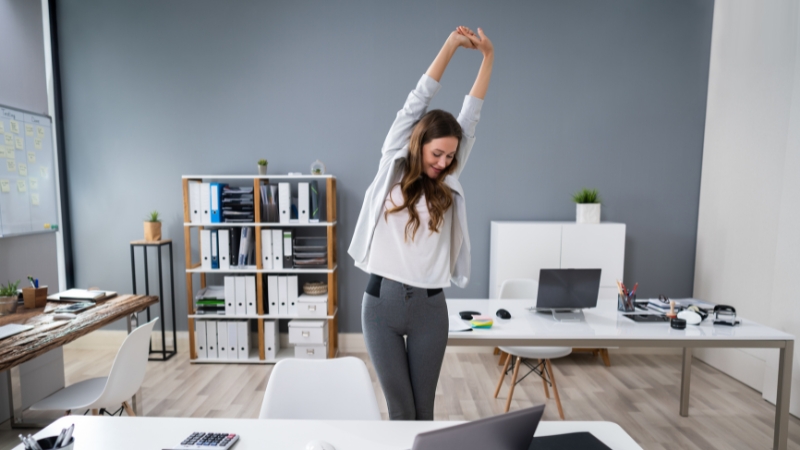
Physical tension in the shoulders, neck, and back is common with anxiety. Taking two minutes to stretch can release this tension and signal to your brain that it is safe to relax.
Simple stretches like shoulder rolls, neck tilts, or a gentle forward fold can reduce physical stress and create a calming pause in your day. Consider pairing this habit with your morning routine or using it as a midday break to reset your mind and body.
Why It Works
Physical tension can reinforce feelings of anxiety. Stretching helps your body and mind relax.
Aspect
Details
Time
2 minutes
Location
Bedroom, office, living room
Best Times
Morning, during breaks, before bed
Benefits
Reduces muscle tension, calms the mind, signals safety to the body
10. Mindful Hand Washing
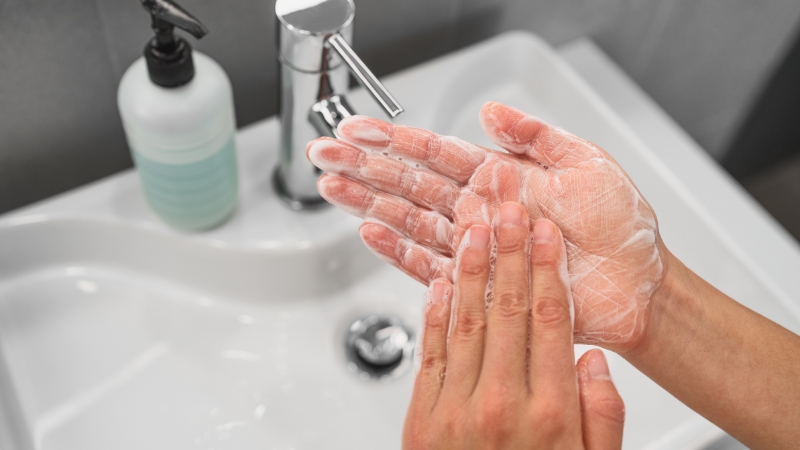
Transform hand washing into a micro mindfulness practice by paying close attention to the sensations of water, the scent of soap, and the feeling of your hands rubbing together. Focus on the warmth or coolness of the water and the sound it makes.
This small ritual helps ground you in the present moment, providing a short but effective mental break from anxious thoughts throughout your day.
Why It Works
This transforms a daily habit into a grounding practice that gives your mind a break.
Aspect
Details
Time
30 seconds
Location
Bathroom, kitchen
Best Times
Every time you wash your hands
Benefits
Mindfulness, grounding, present moment awareness
11. Keeping a Consistent Bedtime
Irregular sleep patterns can increase anxiety by disrupting your nervous system and hormone balance. Keeping a consistent bedtime helps your body maintain a stable circadian rhythm, which is essential for mental health.
Choose a bedtime that is realistic for your schedule and prepare for it with a calming pre-sleep routine like reading a book or dimming the lights. Even if sleep quality varies, maintaining consistency in your sleep schedule helps reduce the unpredictability that fuels anxiety.
Why It Works
Irregular sleep patterns can increase anxiety by disrupting hormonal balance and circadian rhythm.
Aspect
Details
Time
Daily routine
Location
Bedroom
Best Times
Same time each night
Benefits
Regulates mood, reduces anxiety, and improves energy
Conclusion
You do not need to eliminate anxiety completely to live a calm and meaningful life. By integrating these micro habits into your daily routine, you create a buffer between you and anxiety while building long-term resilience.
Start with one or two habits, such as the one-minute breathing reset or a gratitude pause. As these habits become automatic, add others gradually.
Over time, these small actions will help you feel steadier and clearer-headed, giving you the strength to handle life’s challenges with greater calm and confidence.
Each small action you take is a step toward reducing the power anxiety holds over your day. By using these micro habits for anxiety relief, you are actively creating a supportive environment for your mental health, one small moment at a time.

